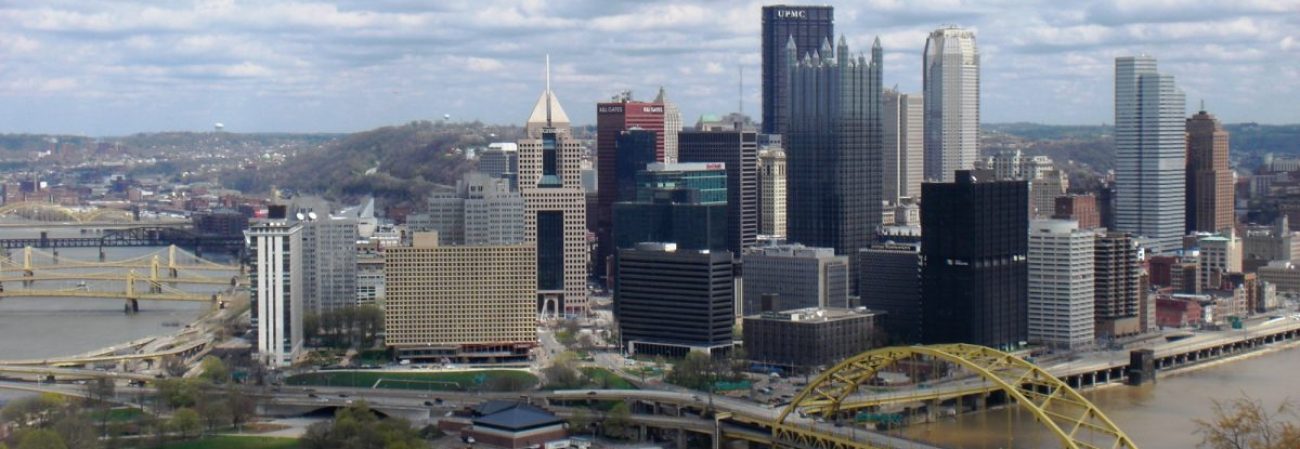WEEK 3
Important events/things:
- Meeting with the RCI Institute clients and students
- Brainstorming session with Educational researcher John Balash
- Project description and mission statement
- Idea for the first prototype – Art style prototypes, Programming prototypes
- Attending the presentation of the RCI Students
We started the week by meeting with RCI institute and discussing the client requirements. They gave us an insight into the project and their requirements.
The first thing we did is to write down the requirements of both the clients and come up with a final project requirements, keeping in mind the requirements of both our clients and the scope of the project.
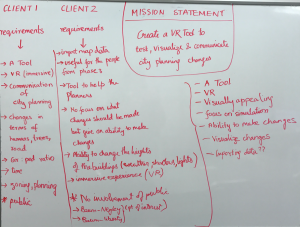
After we finalized the client requirements, we discussed as a team to come up with our project’s mission statement and the description. We came to a conclusion on our mission statement and description after implementing the feedback from our instructors.
Our project’s mission statement would be to prototype an immersive tool for city planners to test, visualize and communicate their ideas to the public. The project’s description involved three important points, who are we building this project for, what are they expecting and what are we doing. We finalized our project description as, “We have been approached by the city of Pittsburgh Urban planning department and The Reimagining Cities Institute (RCI) to explore how game technologies can enhance city planning. Digital District will prototype an immersive VR tool that will allow urban planners to enter a simulated Pittsburgh corridor, make changes and experience them from ground level. As part of a grant from the Heinz foundation, RCI will use our prototype to help their students visualize plans for the Baum corridor in Pittsburgh.”
Then we invited one of the educational researcher’s at ETC, John Balash, to conduct a brainstorming session with the team. The first part of the session was to come up with all the ideas we have about our project by writing it on the sticky notes. The person with the most ideas wins a prize. Then we came up with four categories,
Low cost – Easy to make
High cost – Difficult to make
Low impact – Not be a priority for the Client requirements
High impact – Will be a priority for the Client requirements
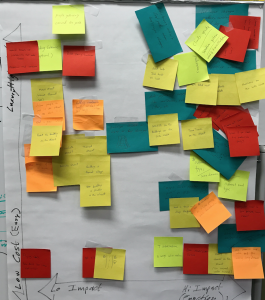
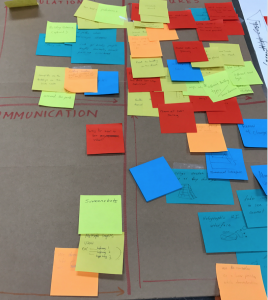
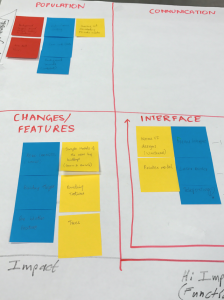
After doing this and filtering the ideas, We came up with our idea for the first prototype. The following things will be in our first prototype as a result of the brainstorming session
- A traffic simulation
- Rectangle block of Baum Boulevard (S Negley)
- Pedestrians walking on the side walk
- Rain (One weather change effect)
- Few building models
We also finished making the poster, logo for the Project.
The week ended by attending the project presentation of the RCI Institute students who did the phase 1 of the three phases project. We understood that the first phase was the research done by the RCI students on ways to visualize data for city planning. The second phase of the project is us creating an immersive tool for the planners.
Art Style Prototypes:
Our artists tried different types likes, photogrammetry, Adding edges and bump map to flat pictures to give a 3D feeling.
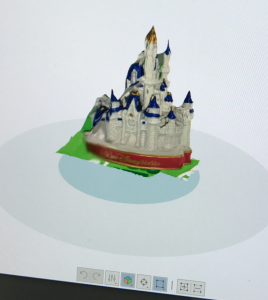
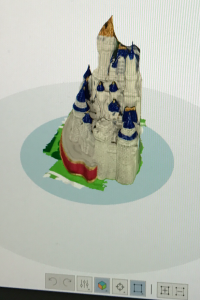
PHOTOGRAMMETRY
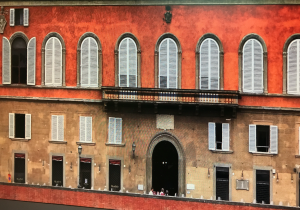
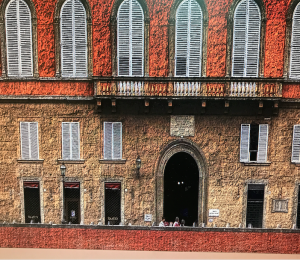
ADDING EDGES AND BUMP MAP TO A FLAT PICTURE TO GIVE IT A 3D FEELING.
For the next week, we will be working on the prototype and having it VR ready for out quarters walkaround.
